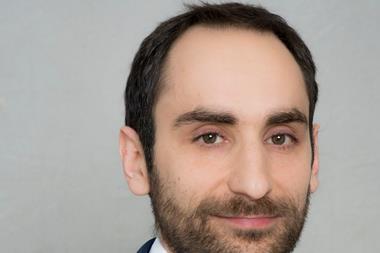As the German statutory pension insurance scheme becomes less reliable, additional pension provision is becoming more important. However, too few employees are taking advantage of occupational pension schemes. In order to increase the popularity – and the degree of penetration – of occupational pension schemes, they need to be backed up through political action.
According to the current, old-age security report (Alterssicherungsbericht) of the German Federal Government, occupational pension schemes account for a mere 6% of the total volume of benefits paid out in the provision of security in old age, while three quarters is accounted for by the statutory pension insurance scheme.
So far, the statutory right to deferred compensation introduced in 2002 has not had the wide appeal that was hoped for. Occupational pension schemes admittedly became more widespread between 2001 and 2011, but from 2007 to 2011 only 900,000 employees acquired new entitlements under occupational pension schemes. The figure was almost 4m between 2001 and 2005. Around 40% of employees with compulsory social security insurance have no occupational pension so far.
Even today there is no way around investment funds when it comes to occupational pension schemes. They form the backbone to the investments of externally financed pension plans and play a crucial role in the funding of direct pension commitments, by far the most important externally financed type of plan for occupational pension schemes.
Retirement institutions are among the most important clients of BVI’s members. All in all, the investment sector manages around €600bn for purposes of retirement provision, and almost €200bn can be attributed to occupational pension schemes. This corresponds to more than one-third of the total assets of around €500bn covering occupational pension schemes.
The investment fund sector takes account of individual situations and requirements of both the employers and employees by means of tailor-made concepts. So-called lifecycle models, for instance, where the investment strategy depends on the age of the employee, offer advantages in comparison with an investment policy with a purely collective basis.
This benefits the employees with pension entitlements, allowing them to participate in the success of the investment. Such models can ensure that occupational pension schemes remain attractive for younger employees in an ageing society. Leading DAX-listed and medium-sized companies are already using this model, which is proving to be popular among the workforce.
In addition, the investment sector offers pension providers instruments tailored to their particular needs, such as special institutional or guarantee funds for the cost-efficient administration of social capital. Spezialfonds, in particular, remain a popular vehicle for pension asset management among institutional investors and are indispensable for the diversification and optimisation of investments.
The investment guidelines can be stipulated in detail by the investor, which makes it possible to develop individual pension planning models precisely tailored to the various requirements. In addition to Spezialfonds, mutual funds are also used by occupational pension schemes and are suitable for smaller volumes as investment component of pension schemes. Investment models with capital protection or minimum guarantees as well as mixed funds without guarantees or life cycle models are used.
The greatest development potential for occupational pension schemes lies in their employee-financed form. As the legal right to deferred compensation introduced in 2002 has not entirely lived up to its expectations, an opt-out or auto-enrolment solution would make sense.
This means that every newly recruited employee would automatically be enrolled into an occupational pension scheme through deferred compensation unless the employees in question explicitly state their intention to opt out.
Opt-out models have proved successful in the United States, and in the United Kingdom an auto-enrolment procedure, initiated in October 2012, is gradually being introduced as a legal obligation for most employers. This solution would not need to be initiated by legislators in Germany but could be put in place through collective bargaining. Even today, many employers are already able to offer occupational pension schemes on an opt-out basis.
Obligatory automatic enrolment of employees into occupational pension schemes without any possibility of an opt out would, on the other hand, not be conducive to the aim in mind. Employees would see such a compulsory solution as an additional burden, similar to a tax.
Pension planning through deferred compensation must become more attractive – for both employers and employees. Externally financed pension plans are dominated by insurance-like structures. There is no genuine competition between the systems that encompass different types of product, although this would achieve cost benefits. Flexible and cost-transparent investment fund solutions could provide an important stimulus for such competition.
In the field of private pension provision this is shown by the success of the fund-based state-subsidised Riester pension system. Almost one-fifth of all Riester contracts are accounted for by fund savings plans. Similar undistorted framework conditions in the case of externally financed plans for occupational pension schemes would increase their efficiency and their degree of penetration.
Benefits from occupational pension schemes should represent untouchable assets in relation to the receipt of basic income support in retirement. This would mean that people with lower incomes would be willing to join an occupational pension scheme. It is also necessary to avoid an additional burden on occupational and private retirement planning institutions by imposing a financial transaction tax. The development of additional, fully funded pension provision in Germany must not be hampered by an additional tax burden on financial transactions.
































No comments yet